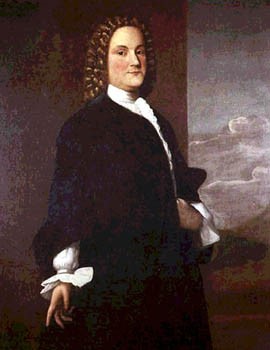In his short book on The American Revolution, historian Gordon Wood offers a series of powerful insights about the nature of the British Empire in the eighteenth century. First, it was about much more than the so-called thirteen colonies along the Atlantic coast of North America. To begin, Wood points out that there were 22 British colonies in the Western Hemisphere by 1760, and the eighteenth-century empire, which he terms “the greatest and richest empire since the fall of Rome,” quite literally “straddled the world” (4). Yet by the middle of the eighteenth century, it was also a wildly troubled empire. If there was one colonist in British North America who seemed to embody both the perils and promises of the British imperial system, it might have been Benjamin Franklin (1706-1790). Today, we consider Ben Franklin as the ultimate symbol for the American spirit and yet during his own lifetime, Franklin was often regarded as more British than American, and even after the War for Independence began, the diplomat and renowned scientist Franklin was a uniquely cosmopolitan figure.
 Students should consider how Wood describes the state of the British Empire in North America by the mid-eighteenth century. Then they might consult Franklin’s famous Autobiography which was written in several stages between the early 1770s and late 1780s. How does Franklin’s story, from his boyhood in Boston to his rise to prominence in Philadelphia and London, help illustrate key aspects of the sprawling British imperial system? Franklin’s autobiography was ostensibly written for his adult son (then royal governor of New Jersey) but was not completed and published until after father and son had a irreparable break over their differing views on the American Revolution. Franklin’s autobiography was first published as a book in French, rather than English, after his death in 1790. Only later, during the nineteenth century, did Franklin’s memorable life story come to be considered an American treasure. You can read more about the complicated history of the Autobiography from a helpful online exhibit at the Library of Congress.
Students should consider how Wood describes the state of the British Empire in North America by the mid-eighteenth century. Then they might consult Franklin’s famous Autobiography which was written in several stages between the early 1770s and late 1780s. How does Franklin’s story, from his boyhood in Boston to his rise to prominence in Philadelphia and London, help illustrate key aspects of the sprawling British imperial system? Franklin’s autobiography was ostensibly written for his adult son (then royal governor of New Jersey) but was not completed and published until after father and son had a irreparable break over their differing views on the American Revolution. Franklin’s autobiography was first published as a book in French, rather than English, after his death in 1790. Only later, during the nineteenth century, did Franklin’s memorable life story come to be considered an American treasure. You can read more about the complicated history of the Autobiography from a helpful online exhibit at the Library of Congress.
 Maps like the representation to the left, or the one above right, offer shorthand ways to contextualize Franklin’s life in that eighteenth imperial system. He was a by-product of the forces outlined here, even as he worked at first to reform, and then ultimately to revolutionize them. Gordon Wood explains how to visualize Franklin at the center of this story in the one-hour lecture embedded below.
Maps like the representation to the left, or the one above right, offer shorthand ways to contextualize Franklin’s life in that eighteenth imperial system. He was a by-product of the forces outlined here, even as he worked at first to reform, and then ultimately to revolutionize them. Gordon Wood explains how to visualize Franklin at the center of this story in the one-hour lecture embedded below.
Gordon Wood: The Americanization of Benjamin Franklin from The Gilder Lehrman Institute on Vimeo.

